Home pageNews Latest research findings: How Canada's coastal peatlands are redefining climate action
Latest research findings: How Canada's coastal peatlands are redefining climate action
That's what it's all about
Prof. Dr. Jürgen Kreyling and Hanna Martens were able to close some gaps in global peatland research with the results of two weeks of field research in our protected areas in July 2025. For the first time, they investigated how high the CO2 storage potential of western Canadian peatlands really is. Initial projections show that the peatlands store up to three times as much carbon as the coastal rainforests there. This makes them a sensitive heavyweight in climate protection.
First results from a unique ecosystem
Few ecosystems are as mysterious, pathologically underestimated and at the same time as crucial for climate protection as peatlands. Although they only cover 3% of the earth's surface, they store over 30% of all soil carbon, more than all the world's forests combined. If they are destroyed, they release huge amounts of CO₂. This would have catastrophic consequences for the development of our climate. This makes it all the more important to understand the function of peatlands even better and to protect them. This was precisely the aim of the research expedition by Wilderness International and the Greifswald Mire Center in the summer of 2025 in our protected areas on the north coast of British Columbia (Canada).
Canada is home to some of the largest peatlands in the world, but until now almost nothing was known about the peatlands in the protected areas of Wilderness International. With the support of Prof. Dr. Jürgen Kreyling and Hanna Martens, these gaps in knowledge are now to be closed.
What makes the moors on Porcher Island so special?
Porcher Island is characterized by a landscape that has not been changed by industry, but has been shaped over thousands of years by natural processes and the way of life of the indigenous population: rugged coastlines, dense temperate rainforests and extensive, hitherto barely explored moors. These "blank spots" on the map are of enormous interest to scientists.
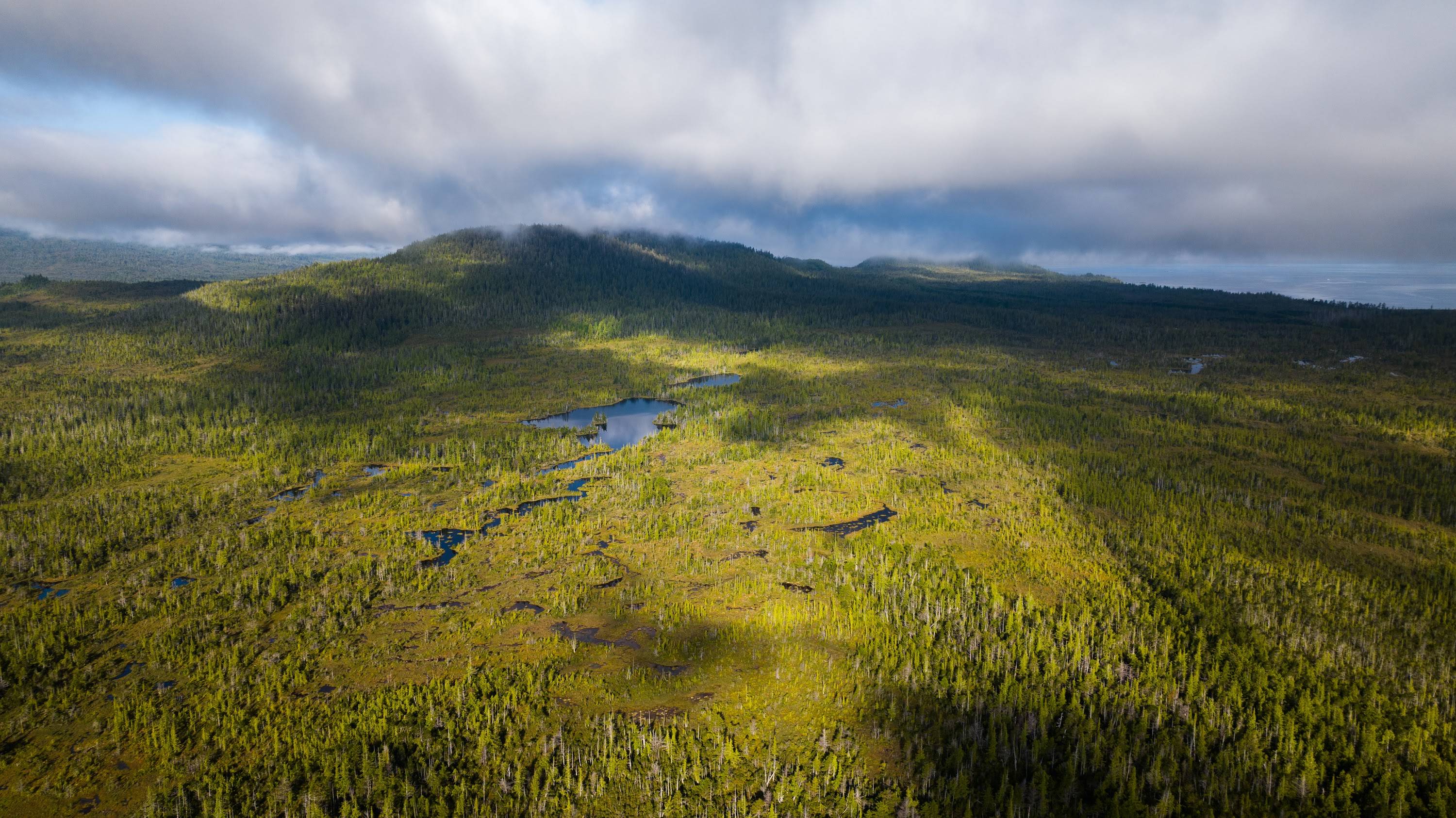
We do not even see a surprisingly large proportion of these peatlands marked on global maps. And what we do have are only rough estimates. In reality, we hardly know anything about their depth, their extent or their carbon reservoirs. The supposedly known information is therefore subject to great uncertainty and this is precisely what makes field research here so exciting.
Prof. Dr. Jürgen Kreyling
Prof. Dr. Jürgen Kreyling has had a close relationship with the wilderness areas of Canada since his student days. Back then, he researched how long forests take to regenerate after clear-cutting. Inspired by his first research expeditions, he knew even then that he wanted to dedicate his life to researching these important ecosystems. He has now been Professor of Experimental Plant Ecology at the University of Greifswald for over ten years and is one of Germany's leading peatland experts.
Canada's wilderness: research under extreme conditions
Daily marches across beaches with heavy drilling equipment, filtering drinking water from the moor, changeable coastal weather and endless bites from sand flies, horse flies and midges (because insects love moors!). What sounds like a challenge to many is only a marginal condition for Jürgen and Hanna. Our expedition gave them the unique opportunity to study an almost unexplored ecosystem at close quarters. "Every step over the springy Sphagnum moss cushions reminded us how alive and intact this ecosystem is and how little we actually know about it," reports Hanna Martens. She is Canadian herself and researches the rewetting of moors in particular. In her home country, she has seen many moors that have been degraded and destroyed by oil and gas extraction.
"Observations and studies show that drained peatlands do not return to their original healthy state even after renaturation. This is because the peat, which is thousands of years old, loses its structure when it dries out: It becomes compacted, pores become blocked, the moss decomposes and loses its function as a water reservoir. Although a rewetted peatland can create new habitats and stop emissions, it does not regain the same storage capacity and resilience as the original ecosystem. This is precisely why it is so crucial to protect intact moors - only as long as they remain wet can they fulfill their unique role for climate and biodiversity."
Hanna Martens
Mire ecologist and doctoral candidate at the Greifswald Mire Center
How do you research moors that you hardly know anything about?
Even before the expedition, the researchers from the Greifswald Mire Center had selected over 100 sampling points in the protected areas with the help of satellite images and existing maps. The selected points covered three characteristic mire landscapes: extensive open raised bogs, forested bogs and mosaics of mire areas called "muskeg" with interspersed small areas of water, open rock and tree islands. The aim was to record the total carbon content of the bogs in the protected areas of the Pacific coast of British Columbia by taking soil samples and determining the above-ground biomass.
Drill cores were taken at each of these locations. These cores made it possible to determine the thickness and quality of the peat body. At the same time, the vegetation of trees and shrubs above ground was recorded in order to quantify the biomass stored above ground. Taken together, the data can be extrapolated to the total area, giving a more accurate picture of how much carbon is actually bound in the peatlands above and below ground.
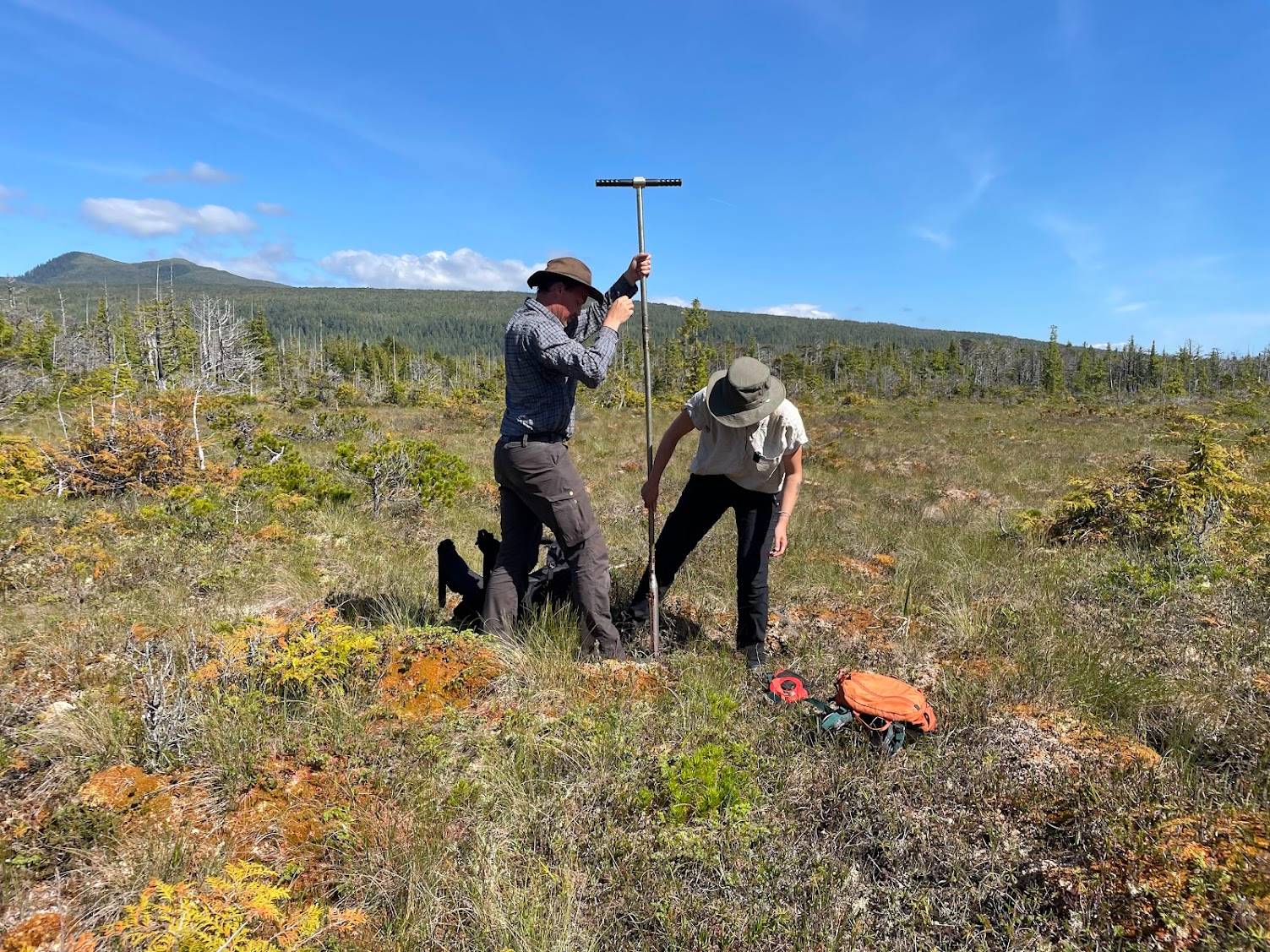
Taking the samples was anything but an easy walk in the park. Again and again, Jürgen and Hanna had to "bury" or "arsche", as they jokingly called it, the heavy drill bit deep into the ground. It was a basic requirement that they were fit and had plenty of stamina, as each drill core filled up with water and became a real heavyweight.
Fun fact: Walking across an intact bog is the closest thing we humans have to the miracle of Jesus - you literally walk on water, because intact bogs contain 95% water in their peat.
The analyzed data provides certainty:
The results confirm what the researchers had already suspected: The peatlands on Porcher Island are among the most powerful carbon reservoirs in the region. A peat layer of over 4 meters in some places means that enormous amounts of CO₂ have been sequestered here over 4000 years.
The comparison with the primeval forests of British Columbia is particularly exciting. While these have so far been known primarily for their gigantic carbon storage in the above-ground biomass, i.e. in the giant trees, initial analyses indicate that up to three times as much carbon is stored in the underground biomass of the bogs. This puts the moors in the spotlight alongside the rainforests as Canada's central "climate reservoirs".
If you touch the preserved moss, pieces of wood or pine needles from the lower end of the drill core, you touch small, inconspicuous record holders. However small, the wood is 10 times as old as any living giant tree found on the entire island.
Importance for climate protection and biodiversity
These results are an important step towards systematically recording the climate protection value of peatlands. They not only provide the scientific basis for international publications, but also close some of the blank spots on the map. At the same time, they provide concrete recommendations for action, which are extremely important, especially in Canada, because in contrast to Germany, where awareness of the relevance of peatlands is growing, peatlands in Canada continue to be destroyed on a large scale.
The bogs on Porcher Island are also extremely valuable habitats: they are home to specialized plants such as sundew, Labrador tea and cloudberry, as well as a variety of amphibians and insects that can only survive in these damp, nutrient-poor habitats. These in turn are the basis for many birds that depend on this space as a breeding or resting place. Bats also need the intact moors, as they feed on the countless insects that can only be found there.
While the moors on Porcher Island are still largely untouched, the situation is very different in other parts of Canada. Oil sand extraction in the neighboring province of Alberta in particular has irretrievably destroyed huge swamp landscapes. When the peat is removed, the "plug is literally pulled out" of the moors: Millennia-old carbon reservoirs dry out, the water runs off and within a very short space of time, gigantic quantities of CO₂ that were previously safely bound in the moor escape.
This is not only an ecological disaster, but also a climate risk of global proportions. Intact peatlands are therefore doubly valuable: they prevent emissions and at the same time safeguard biodiversity. Destroyed peatlands, on the other hand, reverse their role: from a protective shield for the climate to hotspots of greenhouse gases.
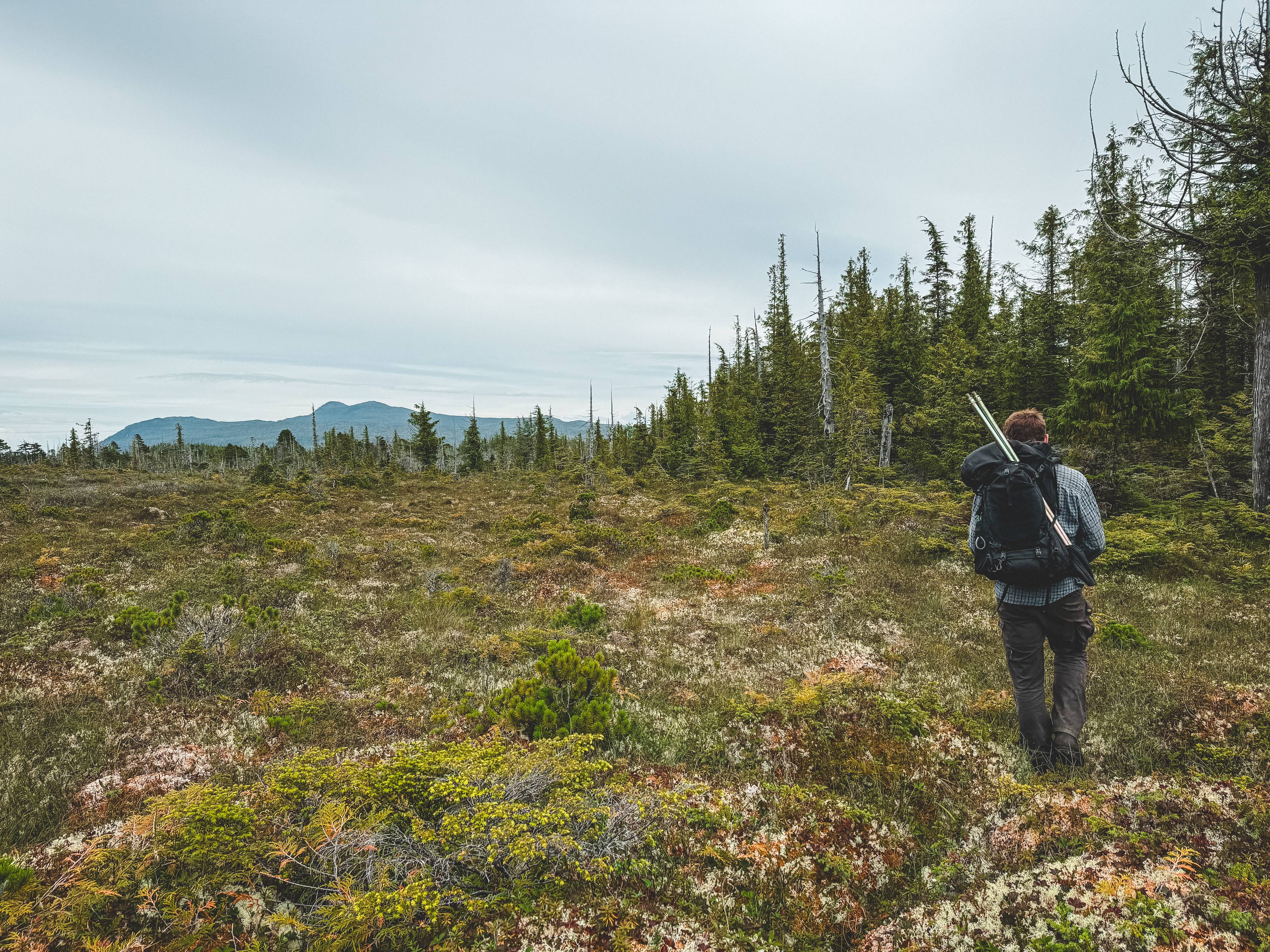
The moorland researchers hiked for days in the wilderness to their sampling areas. Along the way, they encountered minks, eagles, deer and even the shy coastal wolves.
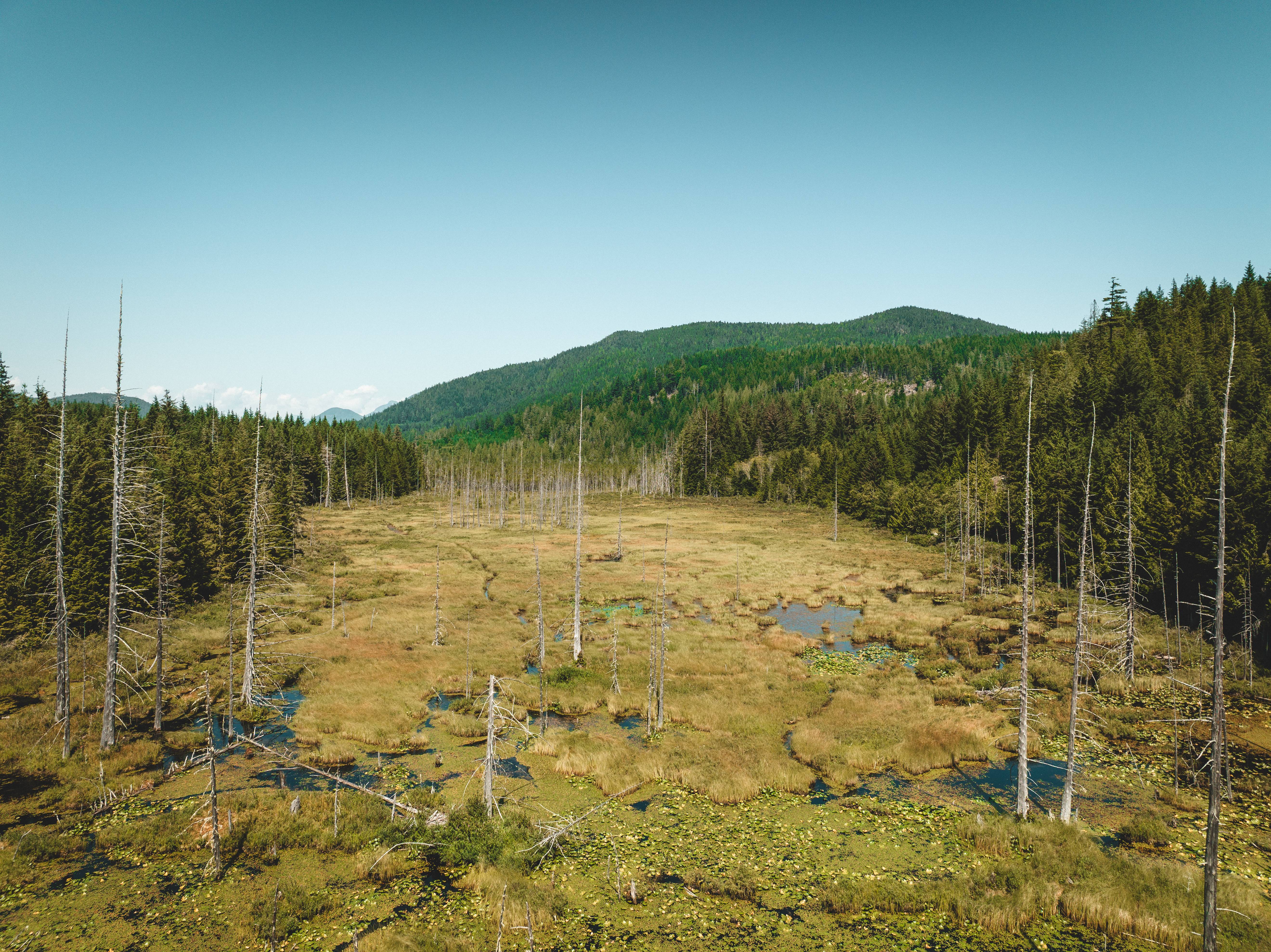
Their progress was slow, as the terrain is criss-crossed by countless ponds and mud holes.
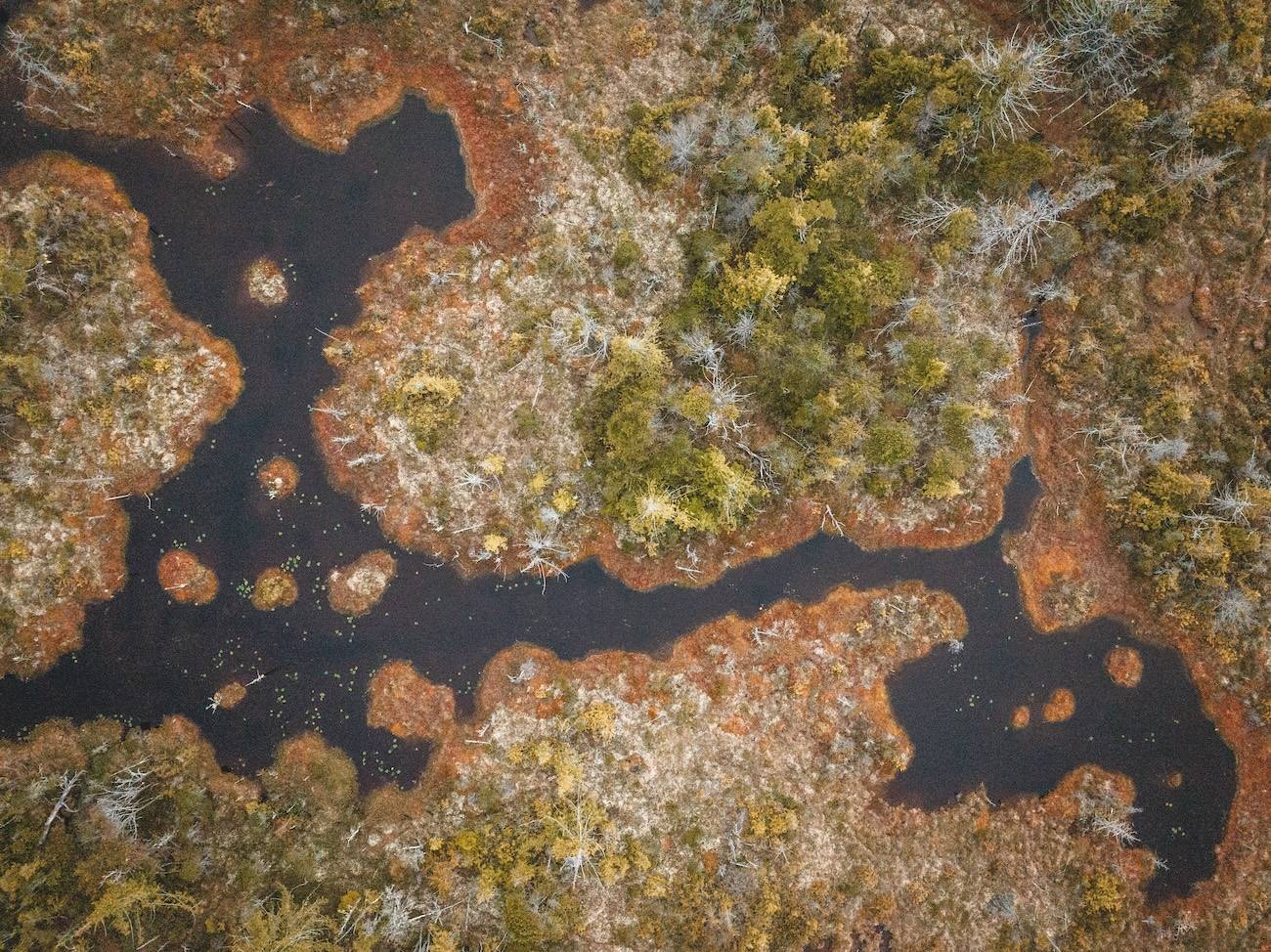
Canadians call this moorland landscape "Muskeg". It is a mosaic of small areas of water, islands of trees and damp cushions of moss. The diverse structures create numerous ecological niches.
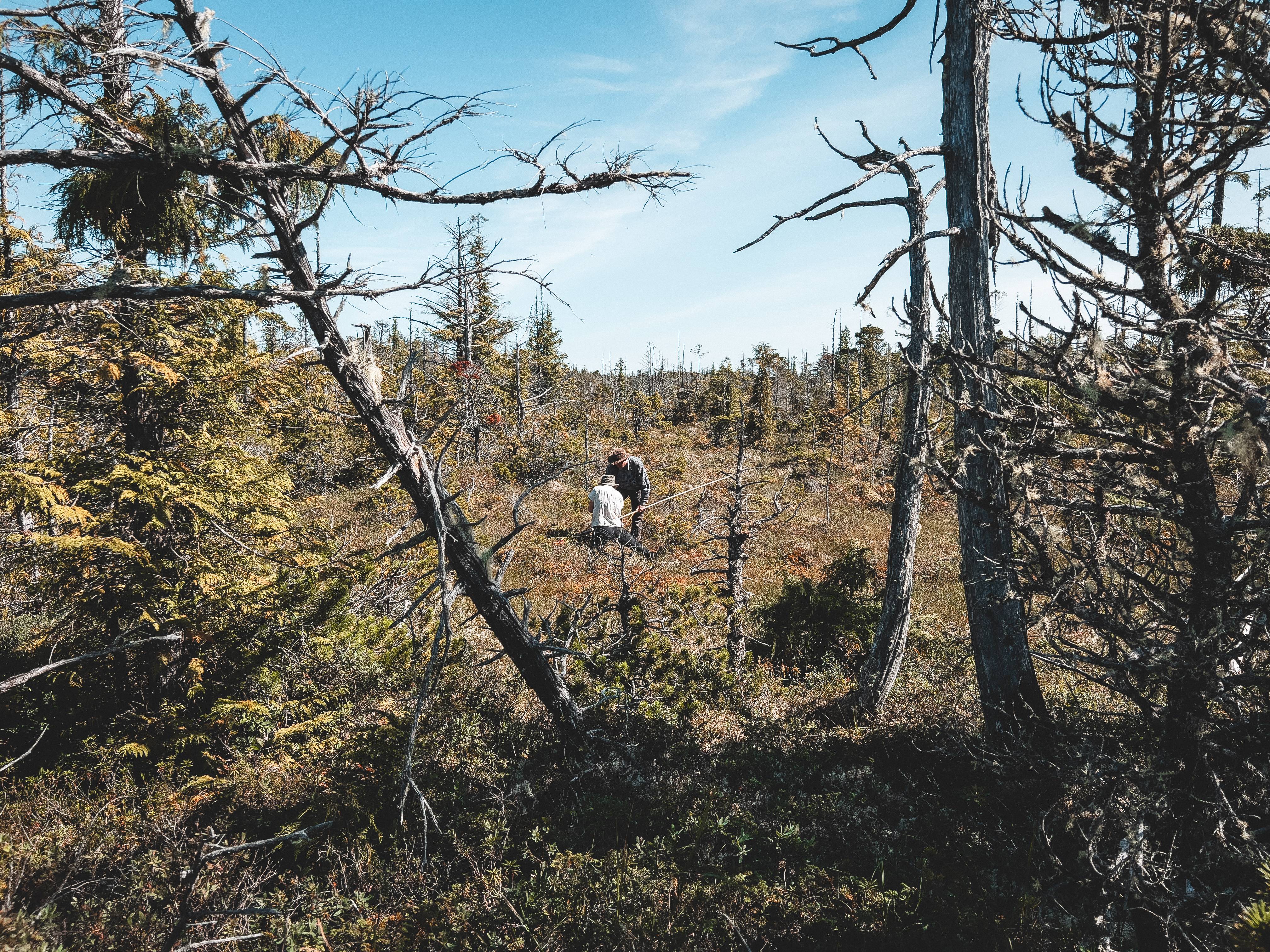
When sampling the moors, the researchers found meter-deep peat soils under trees - due to the harsh environmental conditions, the smallest trees here could be centuries old.
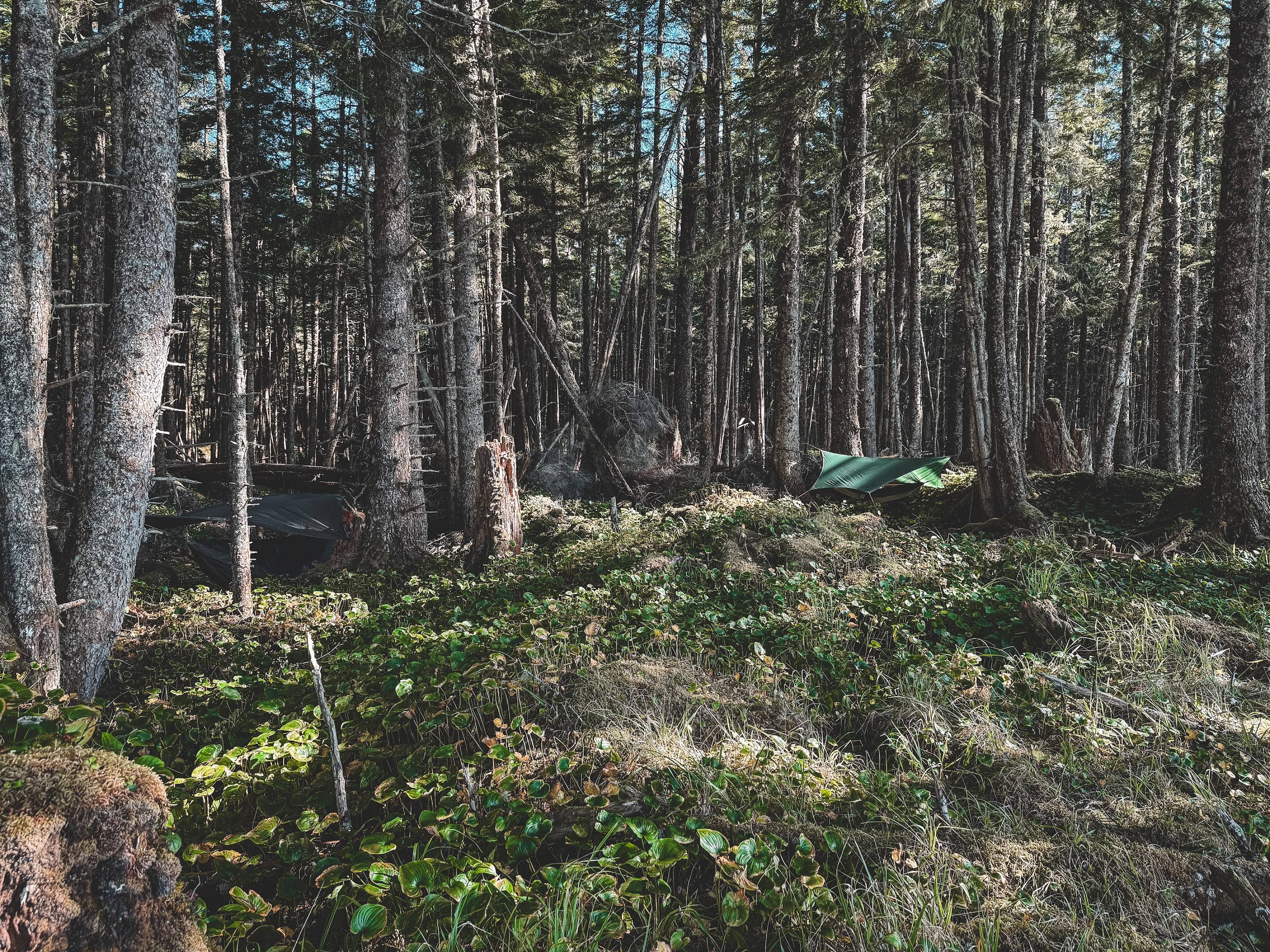
At night, the researchers simply stretched out their hammocks in the protective forest ...
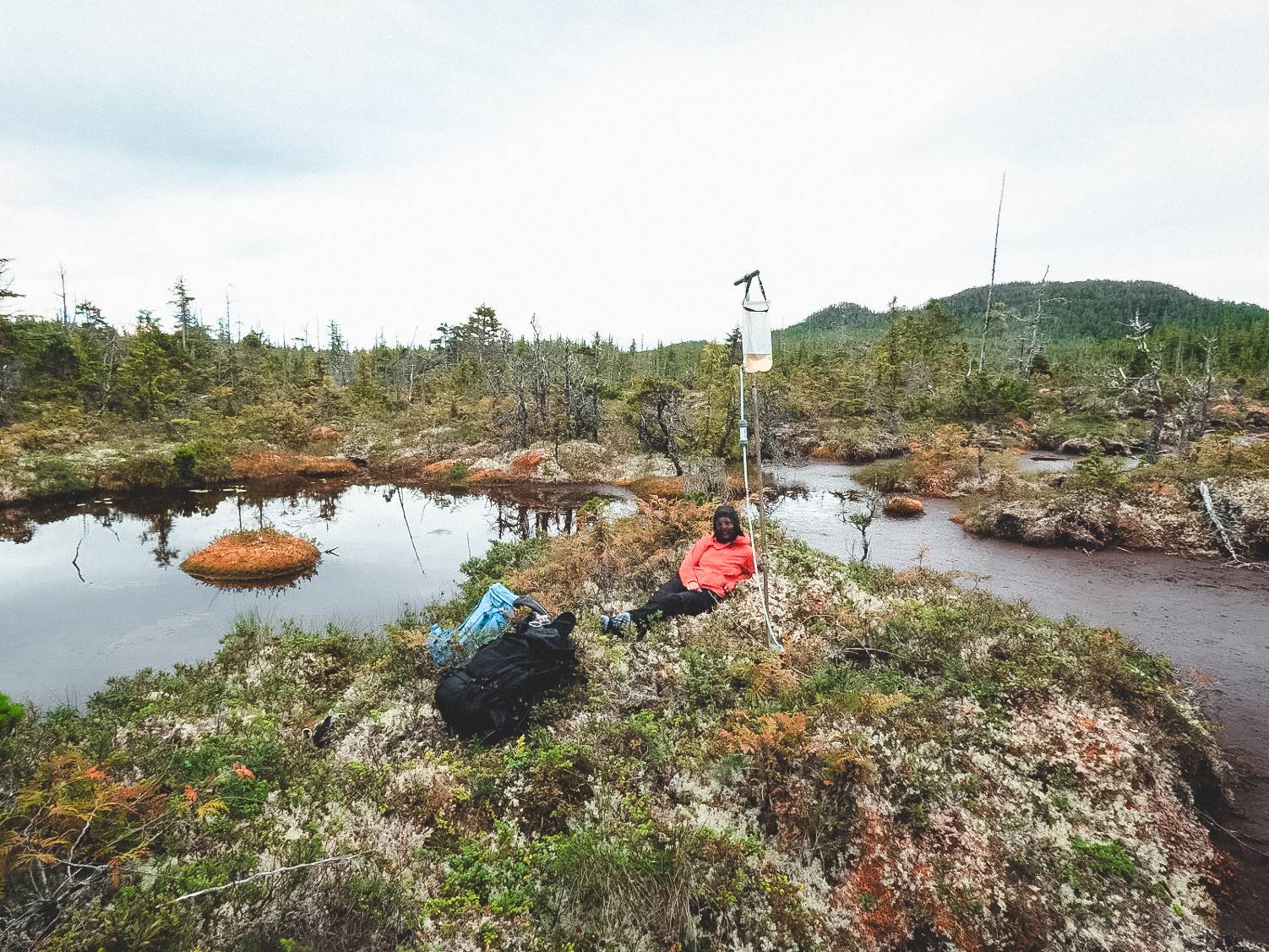
... because there were too many mosquitoes in the moor. So Hanna could only make herself comfortable with mosquito repellent to filter the water.
Long-term monitoring and cooperation with First Nations
This expedition was just the beginning of a long-term collaboration. Annual research missions are planned to document changes over time. Modern technologies such as drones and eDNA analyses are to be further developed. Cooperation with local partners is also particularly important: large parts of the moors on Porcher Island are located in the Gitxaala Nii Luutiksm Kitkatla Conservancy, whose custodians themselves have a great interest in the results and in the joint protection of the moors.
Every square meter of peatland counts
The peatland research on Porcher Island shows: These inconspicuous, often underestimated ecosystems are climate protectors of global importance. Not only do they store huge amounts of carbon, they also safeguard biodiversity in Canada's coastal forests. For Wilderness International, the expedition is a milestone that makes it clear: every square meter of protected moorland contributes to making our future more climate-stable and livable. Hanna would now say: "It's actually not that difficult. Just leave the moors wet, please!"
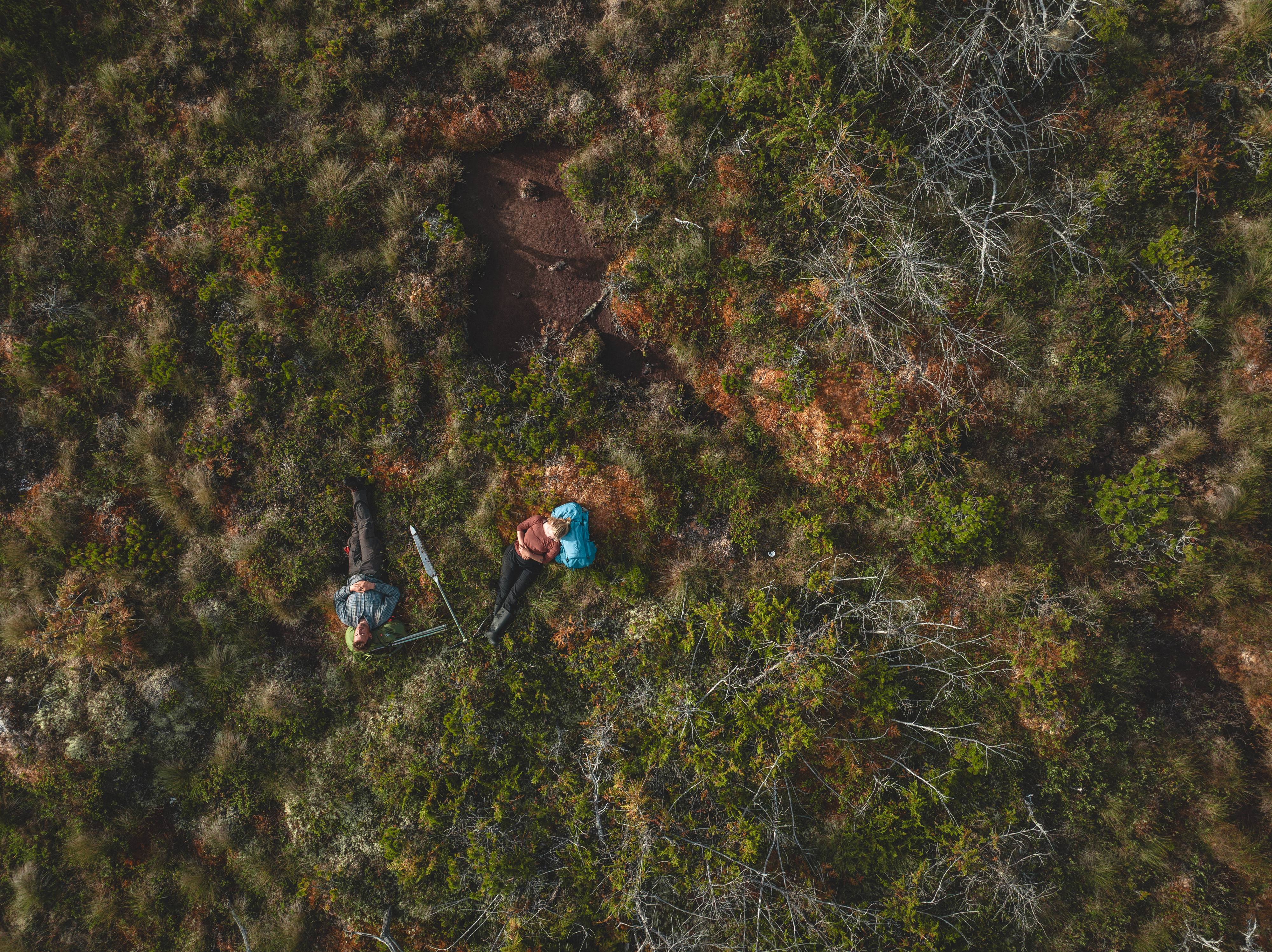
The bog researchers have fallen in love with the Canadian coastal bogs. Thanks to you, they are protected now and for the long term.
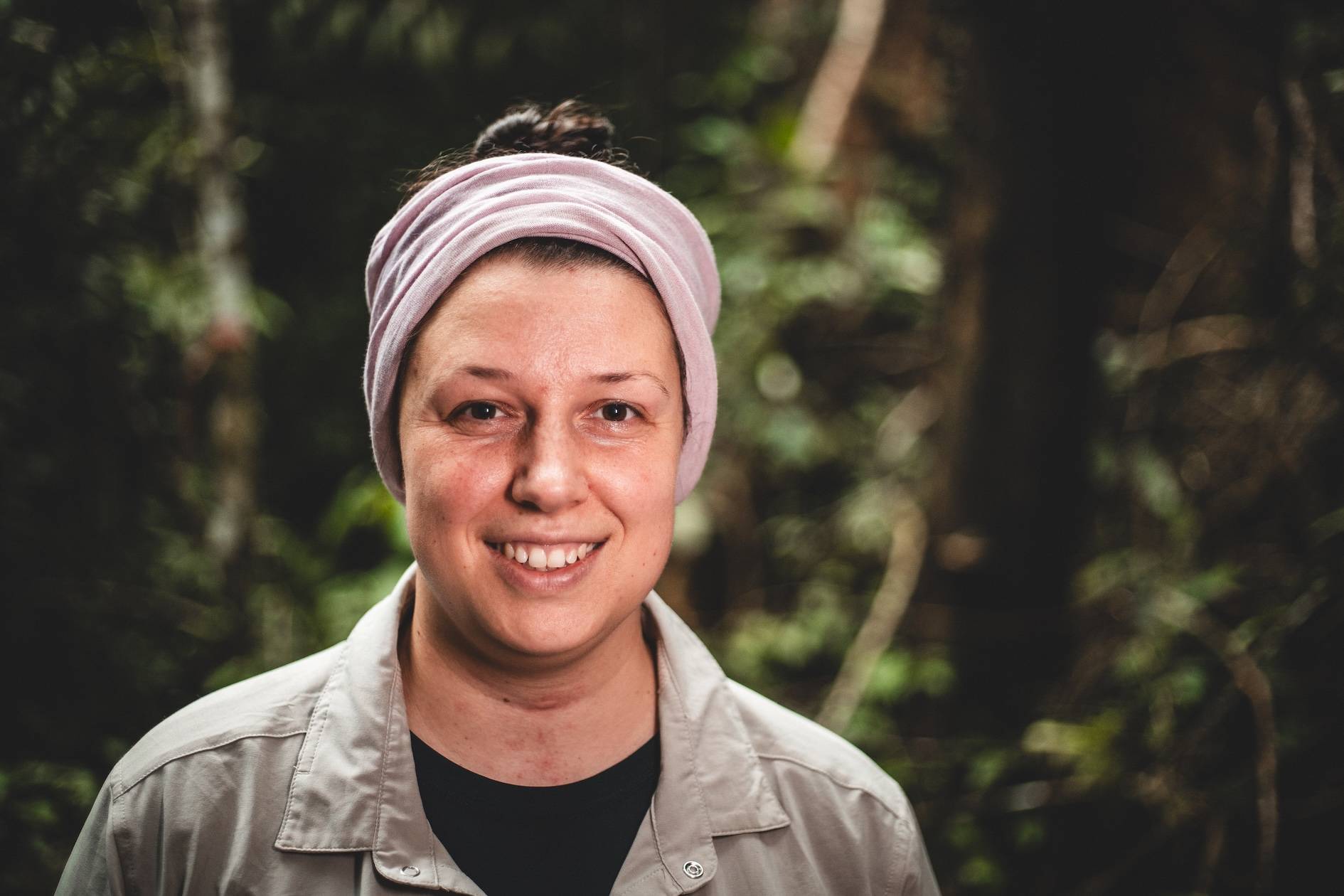
Marie combines scientific expertise with storytelling. Her mission is science communication: making complex topics tangible and illustrating how closely our everyday lives are linked to forest conservation, climate protection and sustainability and how they directly and immediately affect them.
More about our moors and the Canadian protected areas
More about our moors and the Canadian protected areas
We want Moor!
More than 10% of Canada is covered by peatlands and the country has a large share of the world's peatland resources (about 13%).4 Porcher Island in particular, where our Canadian protected areas are located, is 26-50% peatland.
Expedition Canada 2025: Behind the scenes of research
After the extremely rainy expedition last summer, a winter jacket and thick woolly socks were at the top of my packing list this time. With memories of soaking wet days on the last expedition to Canada, I (Marie Schreiber) was convinced that I now knew what to pack. Small spoiler: It turned out differently!
First results of our species inventory with eDNA
The first-ever inventory of species in Canada has produced astonishing and encouraging results. While it is estimated that one species goes extinct every ten minutes worldwide1 and we are therefore heading for an alarming loss of biodiversity, a large number of organisms can be detected on Porcher Island with the help of eDNA analysis.








